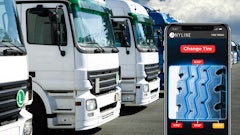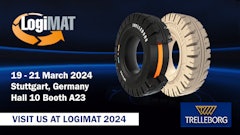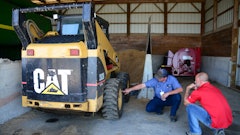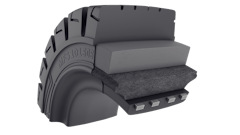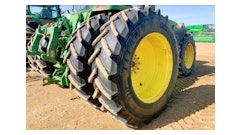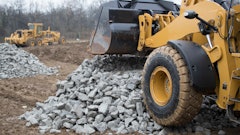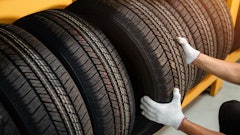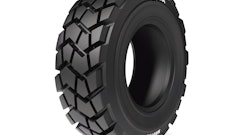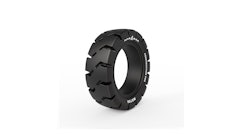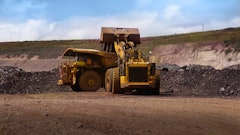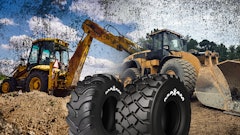For some contractors, the initial purchase price represents the extent of what they care to know about tire costs. For them, managing tire costs is as basic as price shopping. Yet, according to experts at Goodyear and Bridgestone/Firestone, purchase price alone does not determine overall tire expense. Buying the cheapest tires available does not necessarily end up being the best way to reduce costs; nor does purchasing the most expensive tires automatically drive costs up.
To get a better handle on quantifying tire costs, some contractors are turning to tire tracking software. This software helps identify true costs by evaluating a laundry list of performance parameters, such as tread depth, length of service, reason for removal, etc. It compiles this data into reports that can help determine if a particular tire is a good investment and fit for a certain application.
It can pinpoint if a tire improved productivity or created downtime. It can even highlight the ramifications of improper tire maintenance and show how jobsite shortcomings and irresponsible operators affect tire life and ultimately costs.
Currently, Bridgestone/Firestone offers TreadStat and Goodyear offers EM Track III tire tracking software. Typically, the software is purchased by tire dealers who offer it as a service to their customers. However, some business owners prefer to purchase the software and do the tracking themselves. Either way, the end result is the same — gathering data that gives owners the ability to better manage tires.
“Tire tracking software is a great management tool for companies where tire costs are a major portion of their expenses,” says Tim Good, manager global customer accounts, OTR tires at Goodyear. “It gives them the ability to track previous jobs and to determine tire costs.”
Chris Rhoades, manager of business intelligence at Bridgestone/Firestone, adds that tire tracking software offers a variety of additional benefits, such as extending tire life, increasing productivity, reducing costs and building stronger relationships between tire manufacturers, tire dealers and customers.
“You are also able to manage inventory and determine your rolling asset value, which will assist you in job costing,” he says. “Ultimately, you can forecast tire requirements, track productivity and minimize downtime because you can track tires from the time they’re purchased and mounted, through every rotation and pressure check, and even when they come out of service and are scrapped.
All of this information can be recorded on paper, but tire tracking software speeds up the process and allows you to track hundreds of tires at the touch of a button.”
Is it right for you?
Tire tracking software was initially developed for the mining industry where tires are hugely expensive and equipment is relatively stationary. But the concept of tracking tires is gradually making its way into the construction industry.
“Just because many tires used in construction are smaller and less expensive than those used in mining, there’s a misnomer that they’re less important,” says David Ashby, product manager at Bridgestone/Firestone. “But even though their initial cost is relatively small, they shouldn’t be forgotten. Tires are still an important part of reducing downtime for a contractor.”
Rick Cruea, procurement materials management superintendent for a gold mine in northeast Nevada, wouldn’t consider trying to manage tires without tire tracking software. He used to manage costs by simply monitoring monthly tire purchases, but now he relies on D & D Tire in Fernley, NV, to compile reports using Goodyear’s EM Track III program. Currently, D & D tracks all tires used in the underground mine.
“I spent many years in maintenance,” he relates. “Historically, we haven’t done a good job in tire management. But with this tire tracking software, we’re able to break down management into several areas — including what the issues are, where they are located, on what machine, etc. — to monitor our costs.”
Since Cruea began monitoring reports two years ago, he’s been able to make changes to tire management to help reduce costs. Some of the most important ones have been related to improved training for both equipment operators and tire maintenance personnel; providing the right tools; and focusing on jobsite conditions that are less harsh for tires.
It all seems to be working. With the help of the mine personnel and D & D Tire, Cruea has been able to implement changes that have reduced per-hour tire costs by 60% to 70%. “Tires are still one of our big spenders,” he says. “But they’re no longer an area of concern for us. Tire tracking software has helped us carve most of the waste out of our tire costs, and that’s what we were after.”
The kind of returns that Cruea has seen aren’t unusual, according to Britt Johnson, executive vice president at D & D Tire. He recalls another customer who started the program with per-hour tire costs of $2.57 and was able to reduce them to just $.73 per hour.
“That lower cost even factors in three full-time people on site to perform tire maintenance tasks, such as monitoring tread depth and air pressure,” he says. “Compare that to the previous tire company that did minimal maintenance, like pick up spare tires, change tires, etc.”
For this particular customer, reducing per-hour costs was the goal, Johnson explains. But the beauty of the software program is that it can analyze whatever parameters you deem important. “Everyone has his own definition of maximizing his operation,” he says. “For some, it’s extending tire life. For others, it’s minimizing downtime. The software captures the pertinent data needed for analysis to meet those individual tire goals.”
Steve Weakley, president of the commercial tire division at Antioch Tire in Illinois, also helps several of his customers manage their tire costs. He prefers Bridgestone/Firestone’s TreadStat program. “It’s such a valuable tool,” he says.
“The benefits are huge for customers and for us because it helps us determine what works best in different situations, so we know what to keep in inventory.
“Today, all businesses are focused on running as efficiently as possible. It’s difficult to stay profitable unless you run a tight ship, and to run a tight ship, you have to have facts. In the tire industry, it seems there’s more speculation than fact, as well as a lot of variables. By using tire tracking software, you can gather the facts that can help you determine the cost effectiveness of your tire purchases.”
The software enables you to easily track what you paid for a tire, what you got out of it and what you threw away. You can also track patterns.
“You can tell what machines may not be getting the full value out of their tires — and you can find out why,” Weakley points out. “If you try to do all this without some sort of tracking program, you can spend a lot of time spinning your wheels. But with TreadStat, you can stay focused on your goal to understand the different job and equipment demands to properly recommend the best tires for equipment performance, as well as determine which ones are most cost effective.”






